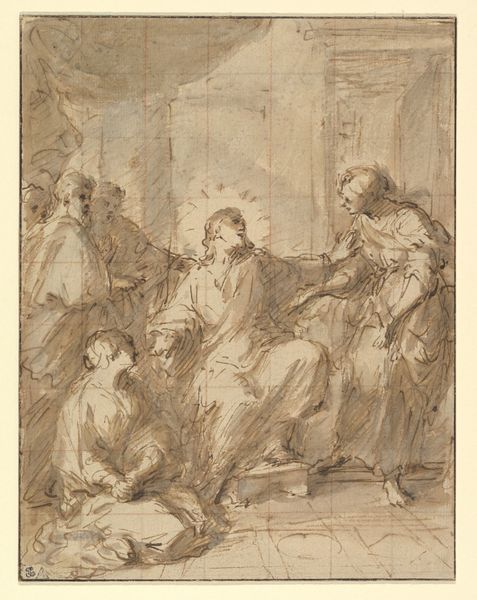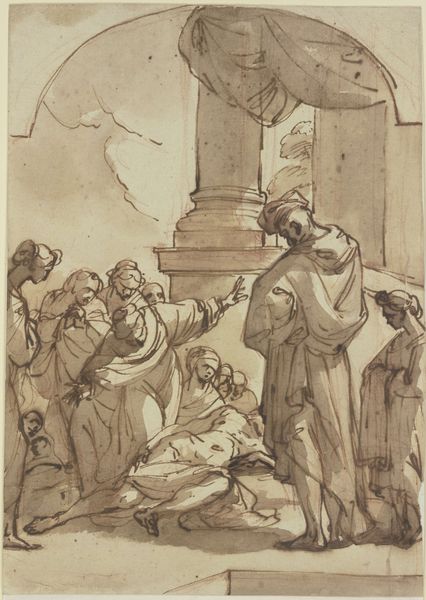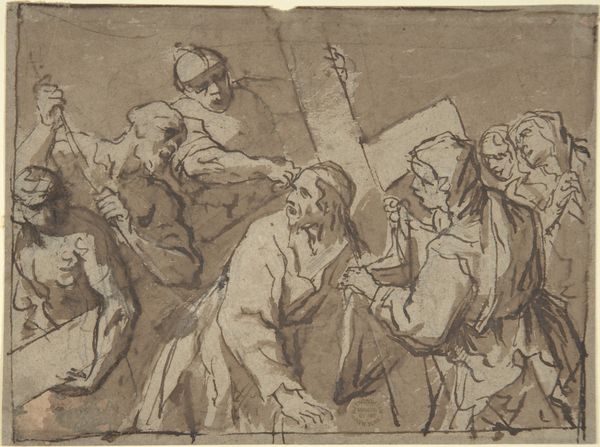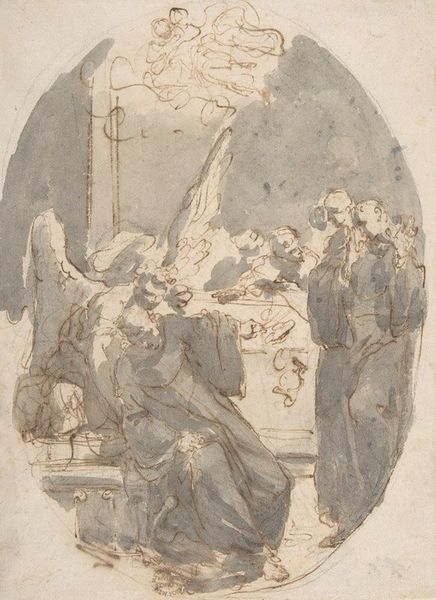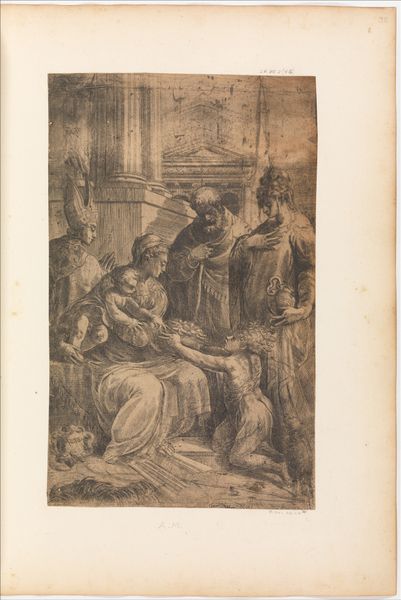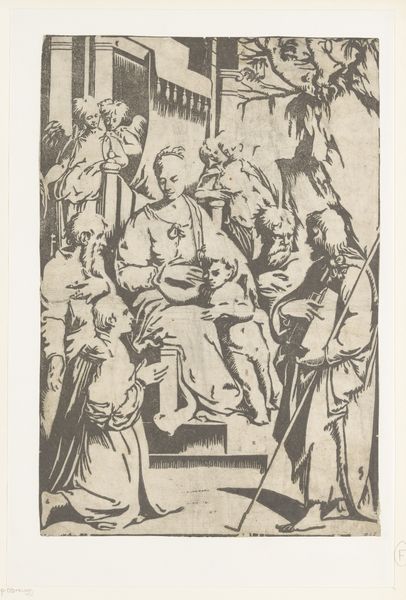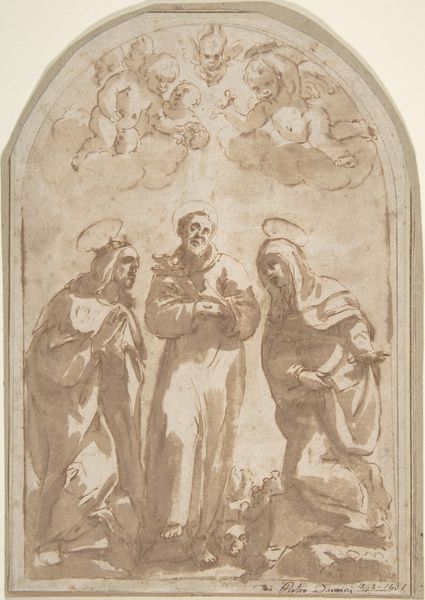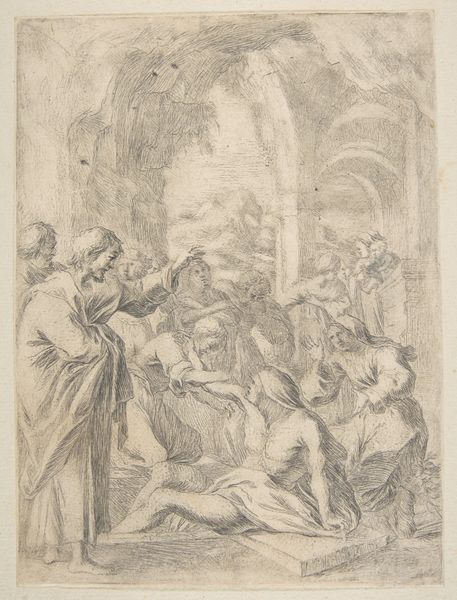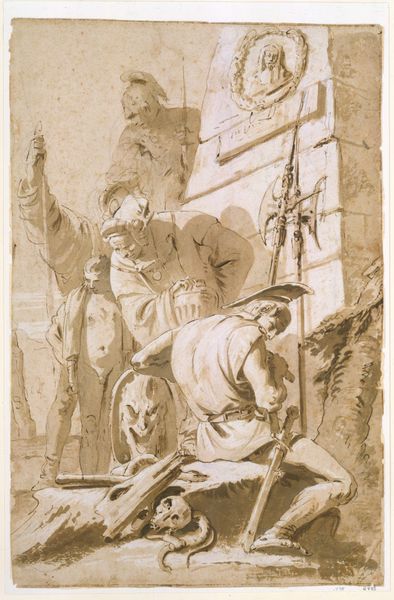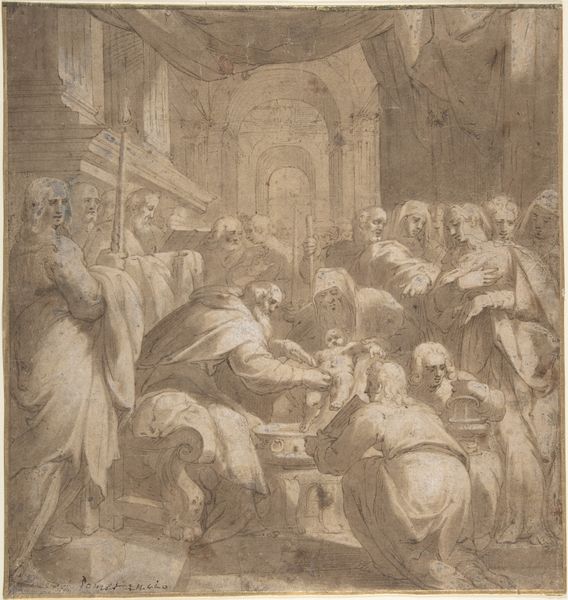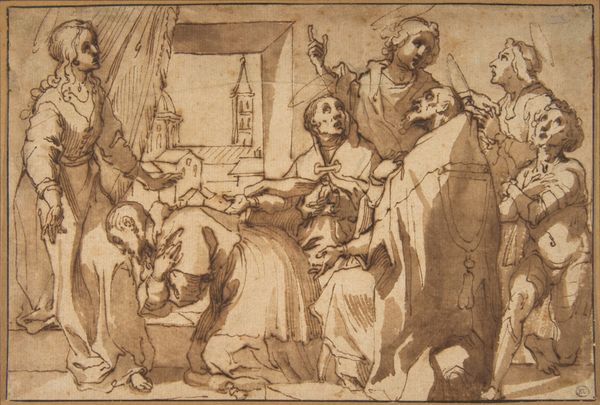
drawing
#
drawing
#
medieval
#
figuration
Dimensions: 10-1/8 x 7-7/8 in. (25.7 x 20.0 cm)
Copyright: Public Domain
Editor: This drawing, "Bishop and Two Saints," dates back to between 1575 and 1600. It's an anonymous piece, currently residing at the Met. I'm struck by the intense expressiveness in the faces, especially given the limited palette and seemingly quick, preliminary linework. What jumps out at you when you look at this work? Curator: Well, this sepia ink and wash drawing offers us a peep into the artist's process, wouldn't you agree? Imagine being in the artist's head as they sketch, the flurry of lines creating form seemingly from the ether. Do you sense the spiritual energy humming within this depiction of religious figures? It reminds me of dreams; how solid shapes appear on the verge of dissolution into the background, barely held together by shadow. It almost makes you wonder...was it observed or imagined? Editor: That's an interesting point; the ephemerality of the piece makes me wonder about the intentions behind it. The sketchiness almost gives the work an unfinished quality. Curator: Exactly! Perhaps the artist was more concerned with capturing an atmosphere, a sense of divine presence, than meticulously rendering details. And isn’t that, in itself, a fascinating kind of devotional act? Think of it like catching whispers on the wind rather than documenting concrete facts. We see what is deemed important, sketched quickly as an exercise, with as much consideration for depth and emotion, while offering hints of Medieval art characteristics! Editor: So, it’s not just *what* is depicted, but *how* it's depicted that conveys meaning? Curator: Precisely! It’s an evocative dance of shadow and suggestion! Even this relatively quick work gives insights to the greater questions the art piece raises for us all! Editor: That’s a beautiful way to put it. I'll never look at a drawing the same way again.
Comments
No comments
Be the first to comment and join the conversation on the ultimate creative platform.
